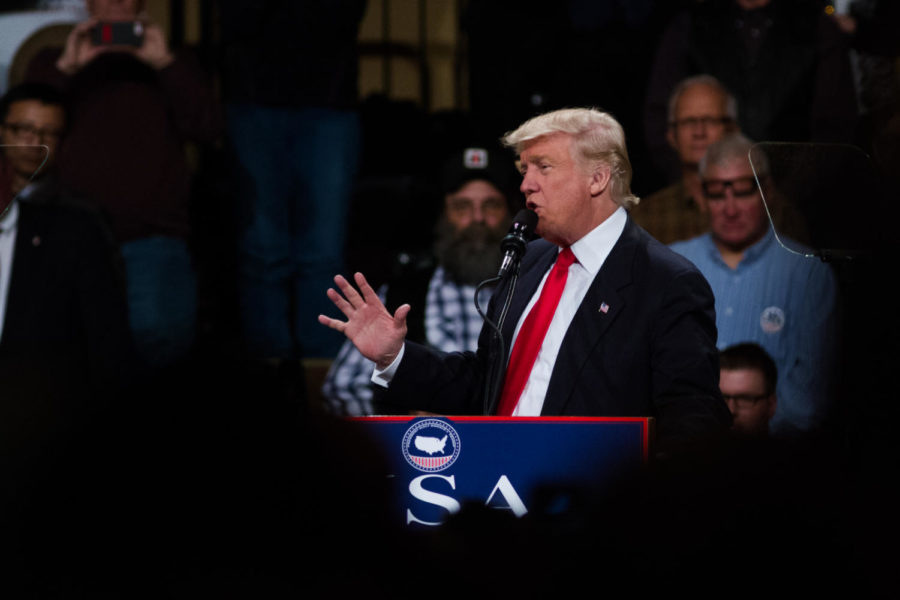Editorial: Immigration reform should not look like a border wall
President-elect Donald Trump speaks during a rally as part of his USA Thank You Tour in Des Moines on Dec. 8. Trump spoke about the general election, how he would repeal Obamacare and bring jobs back to the US and reform care for veterans.
January 23, 2019
The border wall has become one of the biggest controversies of the Trump presidency.
Should we prevent immigrants from entering the United States without our knowing about it? Should we just have open borders where people are free to come and go without the government’s control?
These questions are completely irrelevant to the question of a border wall. The United States of America is a country and as such has borders. The government has, is and will continue to control access across those borders regardless.
The question to answer then becomes the most efficient and cost effective way to do such.
First, the government must define what exactly they are trying to accomplish. They should know exactly who is crossing the border. They should prevent crime from crossing the border, whether that be drugs or human trafficking. They should also address the humanitarian problems people in Central America are facing.
What solutions can be implemented to address these issues?
You could build a wall. Rather, you could expanded on barriers that currently exist. High population areas have had these barriers for a long time. They are cost effective and efficient. They force migrants to attempt entry at a port of entry.
It’s at these ports of entry that border patrol agents are able to document who is entering the country. These same agents can check for drugs or human trafficking. They can also direct refugees fleeing central and south American countries to the proper resources, allowing them to enter the country the legal way.
So what happens if you expand those barriers and build the wall? You’ll probably stop some people from entering the country undocumented. But to what end? And to what cost?
It’s not exactly easy to document how many people enter undocumented. See the problem?
A wall will not protect the U.S. border from immigration, nor should it serve that purpose. If Trump would like to spend $5.6 billion on the border, the investment might not be best put toward a wall but rather immigration reform.
The divisiveness of border protection isn’t new and lawmakers might never fully agree on how to best implement border security, but be careful to not let your assumptions or political party cloud the facts — the results could mean your tax dollars didn’t fix the problem you so desperately want solved.







